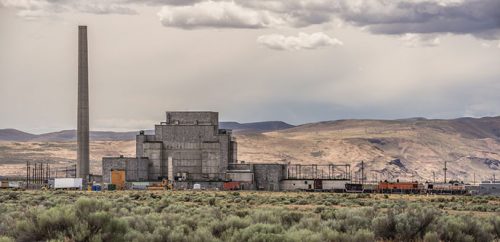
CWP Blog | CWP
Discussions with Deb: What Types of Facilities are Covered Under EEOICPA?
August 8, 2018
August 8, 2018
CWP
CWP Blog
The law establishing EEOICPA provides that workers may file claims in one or more of three different categories:
- Department of Energy (DOE) facility
- Atomic Weapons Employee (AWE) facility
- Beryllium Vendor facility
Differentiating a beryllium vendor facility from the other two is pretty straight forward. It’s a site where beryllium was produced for use in atomic weapons, including residual contamination. The only conditions covered for a beryllium vendor facility are chronic beryllium disease or beryllium sensitivity.
Understanding how an AWE and DOE site differ is a little more complicated.
A DOE facility is a location that DOE owned, leased or held certain contracts while producing radioactive material for atomic bombs. This can include a period of residual contamination. The advantage to a facility being designated a DOE facility is that workers at DOE sites are eligible to file claims under both Part B and Part E. Department of Labor is the agency that determines which sites are DOE sites.
An AWE facility is a private company that processed or produced radioactive material used to create atomic weapons for the United States, except for uranium mining and milling. To qualify as an AWE site the facility needs to have received and returned radioactive materials to a DOE facility. This can also include a period of residual contamination with “potential for significant residual contamination” after the production period. Workers at AWE sites are eligible for Part B only. DOE determines which sites are AWE sites.
One way workers can tell if they worked for a Beryllium Vendor or AWE site is from NIOSH’s 2011 Report on Residual Radioactive and Beryllium Contamination at Atomic Weapons Employer Facilities and Beryllium Vendor Facilities. This report has been updated a number of times.
To learn about DOE sites a good resource is the searchable database DOE’s Office of Health, Safety and Security maintains of the different facilities and their classifications.
EECAP also provides information on how a site is classified on EECAP’s Facilities Information Map which is updated monthly.
So why does the difference matter?
Claimants who worked at a DOE facility are eligible to receive benefits under Part B for cancers caused by radiation, and in some instances chronic beryllium disease or silicosis. They are also eligible to receive benefits under Part E, which can cover any other illness caused by a toxic exposure received at a DOE facility. Also, since these facilities were controlled by DOE there is a better chance that a worker’s employment records will be available.
Claimants who worked at an AWE facility are only eligible for Part B coverage for cancers caused by radiation. It can be much more difficult to obtain a worker’s employment records for an AWE facility.
